Willy Messerschmitt becomes supersonic: the Helwan Ha 300
The world after 1945 was marked by the formation of blocs, in the course of which East and West strove in many different ways to integrate states and governments into their ranks. This also meant generous deliveries of weapons, which deepened the existential dependence of these states on the respective block or on their leading powers, the USA and the Soviet Union.
A small group of states, however, was to be able to refuse this instrumentalization for some time: as an association of "non-aligned states", entities as diverse as Yugoslavia, India or Egypt came together to be able to assert a certain independence in the global events of the Cold War. This is the background against which the most remarkable history of the Helwan Ha-300, which almost helped Egypt to become an independent aviation industry, took place.
That such illustrious names as Willy Messerschmitt or Ferdinand Brandner were behind the development of the Ha 300 makes the story all the more exciting. Messerschmitt succeeded in finding interested sponsors in fascist Franco Spain after his imprisonment in the early 1950s, and then continued the development of turbine-powered combat aircraft at Hispano Aviación. The Ha 200 was the first successful launch. The further development into a supersonic fast turbine fighter, which already ran under the project name Ha-300, was finally stopped by Spain in the early 1960s after protracted development problems.
This is the starting point for the development of the Ha 300 in the narrower sense. Under President Nasser, Egypt was at that time very interested in the development of an independent aviation industry and armaments industry and was also willing to invest considerable resources in this. The foundation of the "Egyptian General Aero Organisation" (EGAO) included the purchase of all project documents for the Ha-300 and the takeover of the entire German development team, including Messerschmitt.
The original plan was to install a Bristol-Siddeley Orpheus Mk 703-S-10 engine, but this soon proved to be too weak for the ambitious performance data envisaged. The next step was to entrust Ferdinand Brandner, a born Austrian who had been a senior officer at Junkers during the war, with the development of a completely new, powerful engine.
It was at this time that India also showed interest in the Ha-300, but above all in Brandner's new engine, which went into trials under the designation E-300. With Kapil Barghava, the top test pilot of the Indian Air Force, the Egyptians were provided with experienced personnel and corresponding know-how.
Flight testing of the Ha-300 was slow, however, and suffered both from technical problems in the airframe and from the engine being too weak. A total of four prototypes were built, three of which were tested in flight, while the fourth aircraft was reserved for rolling tests with the E-300 turbine.
The performances flown show the potential of this compact interceptor: with the Brandner E-300 engine a maximum speed of 2155 km/h was possible, the service ceiling is indicated with 17985 meters, the range would have been 1800 kilometers. A span of 5.84 m with a total length of 12.40 m resulted in a wing loading of 125,749 kg/m2.
Finally, two events were to lead to the final end of the Ha-300 project: firstly, it became clear that an engine development of this magnitude and ambition was beyond the possibilities of Egypt at that time. Exploding costs and innumerable technical problems delayed its field testing until India finally withdrew.
A second blow hit Egypt with the shameful defeat in the Six Day War of 1967. The Egyptian Air Force was practically wiped out on the ground. Those responsible were found in the ranks of politics and the military, whereupon a turnaround and reorientation of armament policy was undertaken under pressure from the country's own people.
The Soviet Union offered a re-equipment with state of the art armament material, which Egypt could not resist. Part of this agreement was also the delivery of hundreds of Mig-21s, which corresponded approximately to the performance spectrum of the Ha-300. The expensive development of the Ha-300, which as a result was no longer needed, came to an end. Thus the Helwan Ha 300, although technically promising, had become a victim of changed geopolitical circumstances.
My model shows the first prototype in its appearance in spring 1964. By the way, this machine has been preserved until today and was on display for some time in the exhibition of the Flugwerft Schleißheim near Munich.
I can unreservedly recommend the model of the manufacturer A&A as an "all-round carefree package" to anyone interested. No matter if you look at the accuracy of fit, the attention to detail, or the rich equipment of the kit, I can give top marks everywhere. What I have often noticed with this manufacturer are the masking foils for the clear parts, which, in addition to a helpful assembly with finely crafted etched parts, make the building process a light-hearted pleasure.
The only change I have made, apart from wiring the landing gear legs and rebuilding the radio antenna on the back of the fuselage, is to replace the kit part for the pitot tube at the bow with one made of metal. This metal tube is from a kit part for a Saab Draken kit in 1/48th scale and fits perfectly!
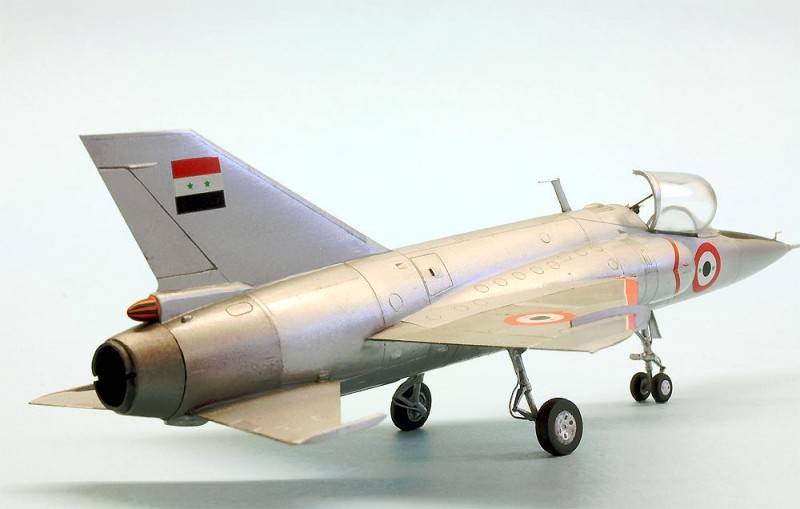
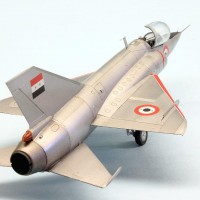
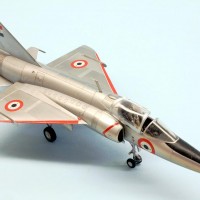
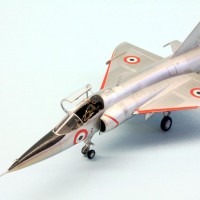
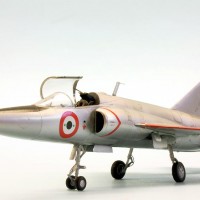
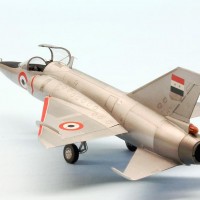


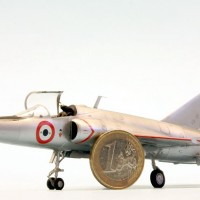
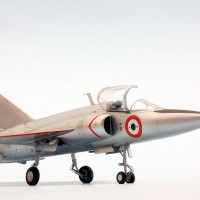
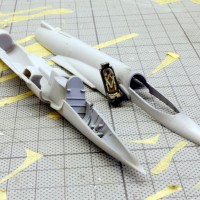
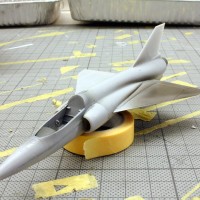
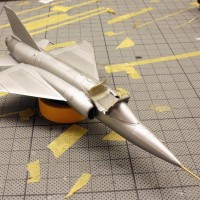
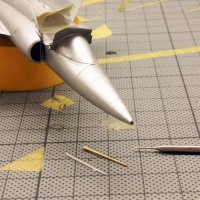
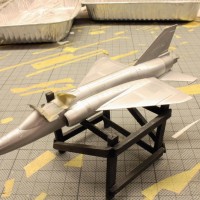
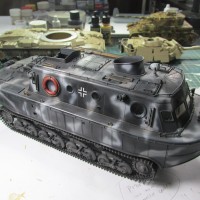
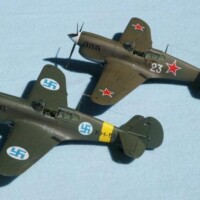
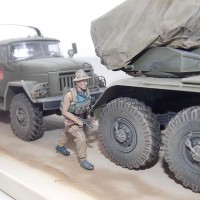
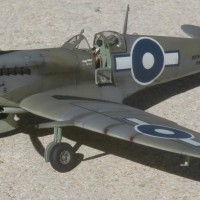
Very peculiar subject, and great history. The model is finely crafted and presents itself a scale above.. seriously, I thought it was 1/48 just based off the pictures. Well done!
I am very pleased with your estimation, Andrew, thank you for your comment!
Great looking model. Sure this is a very interesting and unusual project. Wonder if Messerschmitt and other engineers of the era ever found it the most fantastic of times to first design a propeller aircraft of modest performance and a bit later design a Mach 2 aircraft.
Yes, I share that very thought! You only have to take Messerschmitt's milestone Bf 108: first flown in 1934, 260 Km/h top speed, full of technical innovations - and thirty years later Mach 2!
That period of aviation development will never be seen again. I remember a pilot who came out to Chino six years ago to speak. He said "It's amazing - I can stand here (at the entrance to the main hangar) and see the first airplane I flew operationally (the museum's flyable P-26A) and the last (a non-flyable F-104G)". From P-26A to F-104 in one service career.
That's a engaging story, Tom! That makes the subject matter wonderfully clear.
This is a fantastic build, Roland: totally out of the ordinary, an aircraft I was not aware of its existence.
Looks fast! And it indeed it was!
What a great story! Watching your model, I can visualize all the efforts of the Messerschmitt team.
Also, some broad similarities with the Mirage F-1 (nose/cockpit, fin/nozzle area...) could be thought of, or is it just me?
Ex Nazi-German designers "found" their way also in France after the war. Could it be that both aircraft designs possible similarities have something to do with the designers common origins?
Thanks for bringing out this excellently built model, my firend. Brings so much inspiration!
Yes I was also seeing F-1 but also a weird mix of Folland Gnat and India's little Tejas fighter.
I concur with your thoughts.
Thanks my friend! I am really happy when you write that my report inspires!
What a great history background.
It shows how good this plane really was.
Your model is beautiful.
This a great build of a plane I have never heard of before. The history you gave us helped me fill in the blanks in my aircraft knowledge. With a kit this obscure, it is great that the manufacturer provided some canopy masks.
A very interesting build! Looks great.
Interesting subject nicely presented Roland, well done.
Very nice model and intriguing history, Roland. You have made a tiny little gem in 1/72 scale. Very nice natural metal finish with interesting panel variation.
I had no idea WIlly Messerschmitt continued to design airplanes personally after the war (although I knew of the German company Messerschmitt -Bölkow-Blohm from the 1960s in West Germany - I just thought it was the company name).
Interesting that the Indians were interested in the Ha 300 at one point. As I am sure you know, they employed Kurt Tank to design their Hindustani HF-24 Marut fighter. It would have been interesting if they had key designers of both Messerschmitt and Focke-Wulf driving their industry. In the end, the Marut would seem to have been exactly the sort of indigenous success story that the Ha 300 was not since it went into production and served in combat with some distinction. According to Wikipedia, the Egyptians almost supplied an alternative engine for the Marut, which was somewhat underpowered. I am guessing the engine was the E-300 originally designed for the Ha 300 and might have made its way into Kurt Tank's design, instead of Messerschmitt's (although the deal fell through).
I fully agree with what you said!
It would be really nice to be able to place a model of the elegant "Marut" next to the Ha-300, that would be nice! I would generously not mind the scale 🙂
A very interesting bit of obscure history, Roland, illuminated by a really nice model. Great work all around!
🙂 … Greetings … 🙂 :
For sure this model has a very rich background in history. You have done a great job on this one Roland, nice work.
Thanks for your comments and interesting contributions! You have motivated and inspired me!
Sweet build. Like Tom said I don't think we will see such progress in that time frame again although it would be amazing. I remember my grandfather saying he was so lucky to have been alive from the time of the Wright brothers to seeing a man walking on the moon.
Amazing post Roland - fascinating background on an aircraft and an industry that could have been. Compliments on the build, putting a Euro next to it is a great reference - that was a small plane. I also thought it must have been a 1/48 scale.
Reading your post made me search for A&A models - they make some kits of some pretty obscure aircraft including the VJ101 vertical takeoff experimental aircraft. Great to read that the provides a nice engineered product.
Then when I checked out the Flugwerft Schleißheim Museum website, and there was the VJ101!
Great post in many ways - Thank you!
That’s a beautiful build, I too took it for 1/48. First I heard of the type and very interesting backstory. Thanks for sharing!
Beautiful model! I was fortunate enough that I saw the original airplane on display when I was last time in München.